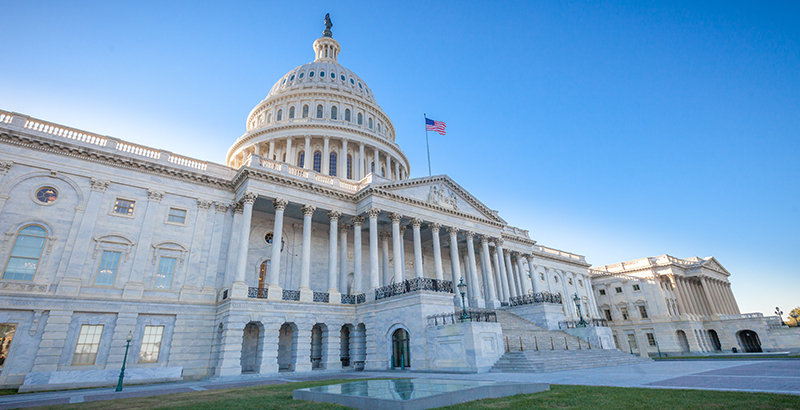Posamentier: Addressing the Student Mental Health Crisis Takes More Than Just ‘Bodies in Buildings.’ It Starts with Social-Emotional Learning. Congress Can Help

Get stories like this delivered straight to your inbox. Sign up for The 74 Newsletter
Across the country, communities are sounding the alarm: When it comes to mental wellness, the kids are not okay. A declaration of emergency for children’s mental health came from the American Academy of Pediatrics, American Academy of Child and Adolescent Psychiatry, and Children’s Hospital Association. The U.S. surgeon general issued an advisory on the crisis. The president highlighted concern about youth mental health on his Unity Agenda.
In response to the crisis, the federal government’s approach is mainly a call for more “bodies in buildings” to staff up schools with counselors, psychologists, social workers and nurses — or at least make sure students can access mental health professionals in other ways.
This is wishful thinking. Schools simply don’t have the health professional workforce needed to address all young people’s mental health needs. The country as a whole has a severe shortage of professionals, and there’s no long line of counselors waiting at the schoolhouse doors to serve students. It will take years to build a pipeline to staff up to the levels called for by this approach.
Worse, the existing youth mental health workforce is already experiencing significant levels of exhaustion. High caseloads can mean these professionals have less time for each student, and less time to reach out to students who may be at risk — as well as less time to care for themselves and their personal well-being. Putting such an onus on these workers risks demoralizing, if not losing, more of them, leaving the country’s youth in a worse position. These few workers might be able to lead the charge, but they can’t be expected to resolve the problem on their own.
This needs to be treated as the public health crisis it is — and it cannot be resolved through one-to-one or small-group supports. Such efforts are of course important, but they are insufficient. Schools need to complement them by providing nonmedical prevention options, led by nonmedical personnel, that increase youth resilience, thereby staving off more significant mental health challenges. This is where life-skill building, often referred to as social-emotional learning, comes in.
Social-emotional life-skill building typically starts in the home. It may include families guiding their children to make a morning getting-ready-for-school routine (which helps develop self-management skills) or walking them through a rough patch with a friend (which helps develop relationship skills).
Because life doesn’t stop when students enter the classroom, these skills can and should be reinforced at school. Research shows that social-emotional learning can have myriad benefits, such as helping prevent self-harming behaviors like substance abuse and suicide, and actions that harm others, like bullying and other forms of violence. Social-emotional learning can also aid academic recovery, because a young person with social-emotional skills like emotion management and problem solving is a young person ready to learn and thrive.
Social-emotional skill-building is nonmedical in nature and can be facilitated by nonmedical personnel. Just as doctors aren’t required to serve patients vegetables in order for those patients to get nutritional benefits, psychologists aren’t necessary for teaching youth skills like relationship-building and self-management that can lead to mental wellness benefits.
Teachers and principals can and must contribute to students’ social-emotional skill-building. Arguably, they always have: There’s a strong, ongoing research base that shows the positive benefits of social-emotional learning in schools. The term “social-emotional learning” may be the subject of hot-button debates, but the concept itself is well-established and extensively studied. With school staff leading a nonmedical prevention effort, more significant youth mental health challenges could be prevented or mitigated, providing one avenue to help lessen the overall crisis.
Policy can help, too. Members of Congress on both sides of the aisle are already tuned in to the fact that youth mental well-being is not where the country wants it to be. But Congress is not prioritizing prevention by way of social-emotional skill-building. For example, it has introduced the Improving Mental Health and Wellness in Schools Act (S.2930 and H.R.5526), the Mental Health Services for Students Act of 2021 (H.R.721) and the RISE from Trauma Act (S.2086) — but none of these prioritize social-emotional learning. They all focus on downstream troubles with “bodies in buildings” as the go-to fix.
Congress should consolidate its legislation and prioritize research-based social-emotional skill-building in addition to the mental health interventions it’s trying to shore up. Specifically, lawmakers can incentivize or fund research-based social-emotional learning. Helping schools reap the benefits of social-emotional learning makes it all the more likely that students will engage in skill-building opportunities that are the most effective, equitable and efficient. This would make it all the more likely that the crisis can resolve and create space for youth mental wellness and resilience to take its place.
A former New York City elementary school teacher, Jordan Posamentier is vice president of policy and advocacy at Committee for Children, a global nonprofit that has championed the safety and well-being of children through social-emotional learning, child protection and bullying prevention since 1979.
Get stories like these delivered straight to your inbox. Sign up for The 74 Newsletter

;)